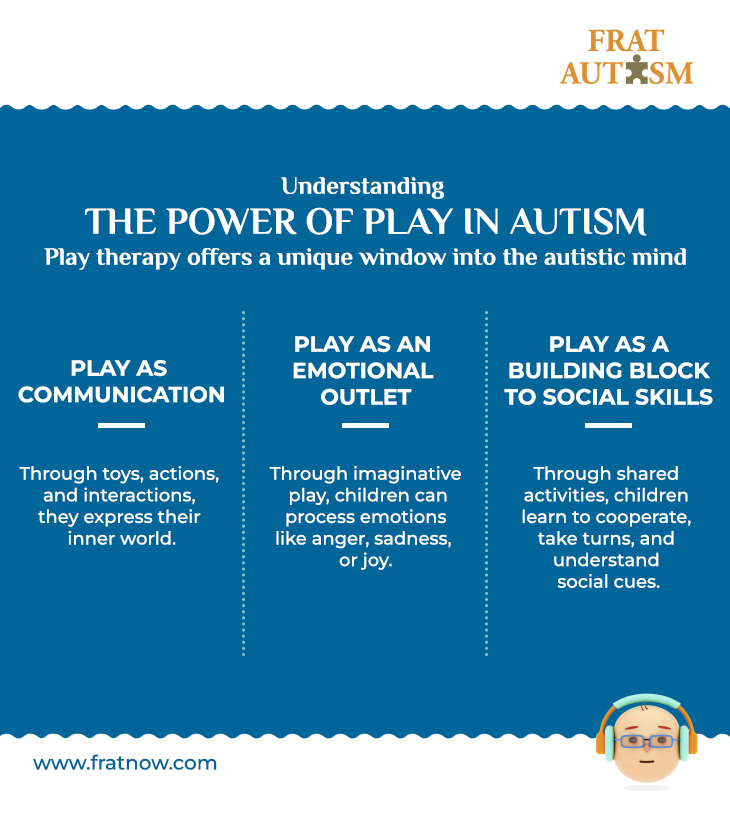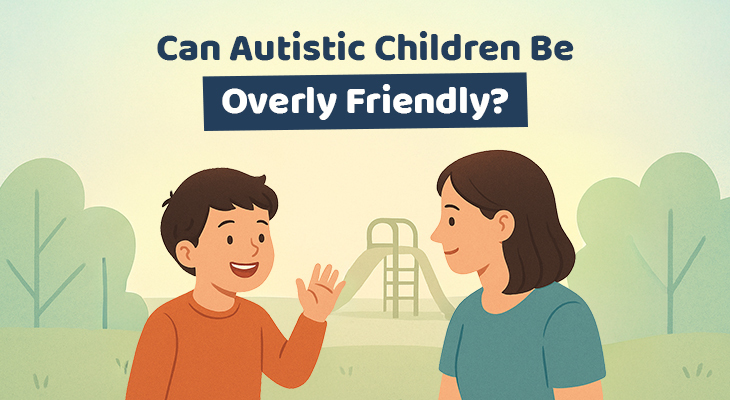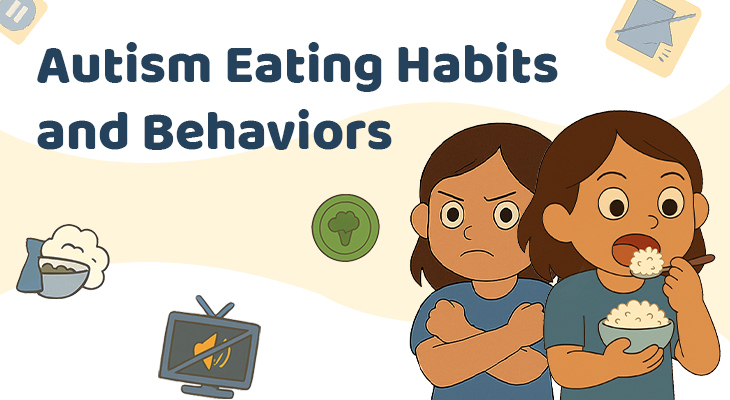Introduction
Play is an integral part of childhood, serving as a foundation for social, emotional, and cognitive development. For children with autism spectrum disorder (ASD), play can be a particularly challenging area, often characterized by limitations in engagement, imagination, and social interaction.
Play therapy emerges as a promising approach to address these challenges. By creating a safe and supportive environment centered around play, therapists can help children with autism develop essential skills, build confidence, and improve their overall well-being.
This blog explores the various applications of play therapy for children with autism, highlighting its potential benefits and the importance of individualized treatment approaches.
Let’s delve into the world of play therapy and discover how it can transform the lives of children with autism.
Table of Contents
- Introduction
- What Is Play Therapy For Autism?
- Understanding The Power Of Play In Autism
- Who Conducts Play Therapy?
- What A Play Therapist Does?
- Types of Play Therapy for Autism
- Measuring Play Therapy Effectiveness
- Play Therapy FAQs
- When Play Therapy Might Not Be Enough: Exploring Underlying Factors
- A Parent’s Viral TikTok Video: 800K Views and a Life-Changing Discovery!
- Conclusion
- References
What Is Play Therapy For Autism?
Play therapy is a therapeutic approach that leverages the power of play to address the unique challenges faced by children with autism spectrum disorder (ASD). Unlike typically developing children who often use play as a natural platform for learning and social interaction, children with autism may exhibit restricted or repetitive play patterns. Due to this, neurotypical children may find it difficult, and sometimes almost impossible, to play with autistic children. As a result, the autistic child may experience challenges in developing essential social skills, such as sharing, turn-taking, and cooperation.
Play therapy aims to create a secure and supportive environment where autistic children can freely explore their world, communicate their needs, and develop essential life skills. By engaging in play activities tailored to their interests and abilities, children can gradually build confidence, improve social skills, and enhance emotional regulation.
Through play, therapists can observe children’s strengths, weaknesses, and communication styles, tailoring therapeutic interventions accordingly. The goal is to foster a sense of competence and autonomy while addressing specific challenges associated with autism.
In the following sections, we will delve deeper into the specific techniques and benefits of play therapy for children with autism.
Understanding The Power Of Play In Autism
From understanding a child’s sensory preferences to uncovering their social desires, play therapy offers a unique window into the autistic mind. Let’s see how:
-
Play As Communication
For children with autism, play may serve as a primary language. Through toys, actions, and interactions, they express their inner world. Therapists can decipher these unspoken messages, gaining insights into the child’s thoughts, feelings, and needs. To further understand how communication challenges manifest in autism, read more on A Comprehensive Introduction to Autism Spectrum Disorder.
-
Play As An Emotional Outlet
For children with autism, expressing emotions is usually challenging. Play therapy offers a safe space to explore feelings without words. Through imaginative play, children can process emotions like anger, sadness, or joy. Therapists can help children understand and label these feelings, fostering emotional intelligence and resilience. Learn more about how to support your child emotionally in our Advice for Parents with Autistic Children blog.
-
Play As A Building Block To Social Skills
For children with autism, social interactions can be challenging. Play therapy offers a safe space to practice essential social skills. Through shared activities, children learn to cooperate, take turns, and understand social cues. You can explore strategies to improve your child’s social skills in Navigating Social Challenges: A Guide for Caregivers of High-Functioning Autistic Children.

Download Download & share this infograph card in your network [Free Download]
Who Conducts Play Therapy?
Play therapy is typically conducted by licensed mental health professionals who have received specialized training in play therapy techniques.
It’s recommended to seek a play therapist who is certified or registered by the Association for Play Therapy (APT), ensuring they meet specific qualifications and standards of practice.
What A Play Therapist Does?
A play therapist is more than just a caregiver; they’re a co-explorer in a child’s world. They understand that play is a child’s language, and they use it as a tool to connect, understand, and support.
For example, if a child repeatedly lines up toy cars, a therapist might gently join in, adding another car to the line or creating a road for them. This simple act can encourage interaction, turn-taking, and even spark imaginative play, like creating a story about a car race.
Or, if a child is overwhelmed by sensory input, a therapist might introduce a calming activity like playing with bubbles or listening to soft music. This can help regulate the child’s senses and create a more relaxed atmosphere for play.
Remember, the play therapist’s goal is to build trust, encourage exploration, and support the child’s unique development.
Types of Play Therapy for Autism
Play therapy offers a versatile approach to addressing the unique needs of children with autism. These techniques can be broadly classified into three main categories. Each type of play therapy offers distinct benefits and may be more suitable for certain children based on their individual needs and preferences. A skilled play therapist can adapt these techniques to create a personalized treatment plan for each child with autism.
Structured Play Therapy
Structured play therapy provides a clear framework for children with autism to learn and grow through play. It involves a therapist taking an active role in guiding the play session, setting specific goals, and creating a structured environment. This approach is beneficial for children who require more guidance and structure. You can find more details about structured approaches in autism treatment in our blog on Early Intervention in Autism (ASD) – A Life-Changing Opportunity.
Key components of structured play therapy include:
- Goal-oriented activities: Therapists select toys and games that target specific developmental areas, such as language, social skills, or motor skills.
- Clear expectations: Children are provided with clear guidelines and expectations for play, helping them understand what is expected of them.
- Step-by-step guidance: Therapists break down complex tasks into smaller, manageable steps, offering support and encouragement throughout the process.
- Visual supports: Visual aids, such as picture schedules or social stories, can be used to enhance understanding and reduce anxiety.
- Positive reinforcement: Praising and rewarding desired behaviors helps to motivate children and build self-esteem.
Non-Directive Play Therapy
In contrast to structured play therapy, non-directive play therapy allows children greater freedom to explore and express themselves through play. The therapist creates a safe and supportive environment, observing the child’s behavior and offering gentle guidance when needed. This approach can be particularly helpful for children who benefit from unstructured play and self-directed exploration.
Key characteristics of non-directive play therapy include:
- Child-led exploration: The child chooses the toys, activities, and pace of the play session.
- Therapist as observer: The therapist acts as a facilitator, observing the child’s behavior and offering reflective statements to encourage self-expression.
- Unconditional positive regard: The therapist provides a non-judgmental and accepting environment, fostering trust and security.
- Empathy and reflection: The therapist reflects the child’s emotions and experiences back to them, helping them understand and process their feelings.
- Focus on the process: The emphasis is on the child’s play process rather than achieving specific goals or outcomes.
Sensory Play Therapy
Sensory play therapy focuses on addressing the sensory processing challenges often experienced by children with autism. By providing opportunities for sensory exploration, therapists can help children regulate their senses, improve attention, and reduce anxiety. Sensory play activities may involve using various materials, such as water, sand, playdough, or textured objects. For more information on sensory issues in autism, read our Sensory Issues and Autism: An all you need to know guide for parents & caregivers.
Key components of sensory play therapy include:
- Sensory exploration: Children are encouraged to explore a variety of sensory materials, such as water, sand, playdough, textured fabrics, and lights.
- Sensory integration: Activities are designed to help children integrate sensory input from different senses (sight, sound, touch, smell, taste) to improve sensory processing.
- Sensory modulation: Therapists help children learn to regulate their sensory responses, avoiding overstimulation or under-stimulation.
- Sensory-based communication: Children can use sensory experiences to express their needs and emotions.

Download Download & share this infograph card in your network [Free Download]
Measuring Play Therapy Effectiveness
Determining the success of play therapy involves a multi-faceted approach. Key methods include:
- Observation: Therapists closely monitor children’s behavior, play patterns, and interactions to assess progress.
- Parent and caregiver feedback: Regular communication is essential to track changes in behavior, mood, and social skills at home.
- Standardized assessments: Tools like the Autism Diagnostic Observation Schedule (ADOS) can help measure changes in core autism symptoms.
Play Therapy FAQs
- How long does a play therapy session last?
- Typically, play therapy sessions last between 30 to 50 minutes. However, the duration can vary based on the child’s age, needs, and the therapist’s approach.
- How many sessions are needed?
- The number of play therapy sessions required can vary depending on the child’s specific needs and goals. Some children may benefit from a short-term course of sessions, while others may require ongoing therapy.
- Can parents participate in play therapy sessions?
- While parents are usually not present during the actual play therapy session, they play a crucial role in the child’s progress. Therapists often involve parents in the treatment plan and provide guidance on how to support their child at home. Find additional insights on the role of parents in What has Autism taught me as a parent?.
- Is play therapy effective for all children with autism?
- Play therapy can be beneficial for many children with autism, but its effectiveness depends on various factors, including the child’s age, severity of symptoms, and the therapist’s expertise. It’s essential to consult with a qualified play therapist to determine if it’s the right approach for your child.
- Can play therapy be integrated with other interventions?
- Yes, play therapy can be effectively integrated with other interventions. By combining play therapy with approaches like applied behavior analysis (ABA), speech therapy, or occupational therapy, a comprehensive treatment plan can be created to address the diverse needs of children with autism. This collaborative approach often leads to more significant and lasting improvements.
- How can I find a qualified play therapist?
- Look for a therapist with specific training in play therapy and experience working with children with autism. You can also seek recommendations from your child’s pediatrician or other healthcare providers. You could also try searching for a play therapist in the Association for Play Therapy (APT) Directory of Credentialed Play Therapists and Supervisors.
- Is play therapy covered by insurance?
- The short answer is: it depends. While play therapy is a form of psychotherapy, the extent of insurance coverage varies widely. Many health insurance plans now cover mental health services, including therapy. However, it’s essential to verify your specific plan’s coverage. You can read more about insurance coverage options in our blog Insurance Coverage for Autism.
When Play Therapy Might Not Be Enough: Exploring Underlying Factors
While play therapy is a valuable tool in supporting children with autism, it’s essential to recognize that it may not address all challenges independently. Some children might experience persistent difficulties despite engaging in therapy. In these cases, exploring underlying medical or nutritional factors can be crucial.
Cerebral Folate Deficiency Syndrome (CFDS) is one such condition that can significantly impact a child’s development and behavior. Research indicates a correlation between CFDS and autism, suggesting that addressing this deficiency could potentially improve overall functioning. For a deeper understanding of CFDS, read our Cerebral Folate Deficiency – An Overview blog.
If a child with autism is not responding as expected to play therapy, it’s essential to consider underlying medical conditions. Consulting with a healthcare professional to rule out or identify potential issues like CFDS can be a crucial step in developing a comprehensive treatment plan. Learn more about the link between autism and folate receptor autoantibodies in our blog Folate Receptor Autoantibodies in Autism Spectrum Disorder.
ABA therapy, which is often considered a cornerstone in autism treatment, also traces to cerebral folate deficiency as an underlying medical issue for its ineffectiveness. In cases where ABA therapy doesn’t work, it is recommended to check for folate deficiency.
What is the most frequent cause of cerebral folate deficiency in autistic children?
Folate Receptor Autoantibodies (FRAs) are found to be the most common cause. These autoantibodies are highly prevalent in children with ASD.
Is there a test that screens for Folate Receptor Autoantibodies?
Yes, FRAT® screens for folate receptor autoantibodies.

What is FRAT®?
FRAT® is a vital blood test that screens for Folate Receptor Autoantibodies, which are a contributing factor to cerebral folate deficiency, which has also been linked to autism.

Why FRAT® test in Autism?
In 15,000+ tests conducted so far, nearly 53% of them tested positive for folate receptor autoantibodies, indicating a form of cerebral folate deficiency syndrome.

Why do FRAT® right now?
Early diagnosis is the key to optimal treatment outcomes. With the information provided by FRAT®, you and your physician can explore alternate reduced folate treatments that can make a real difference!

What to do after FRAT®?
Insufficient folate can often be corrected with alternate folate metabolites that bypass the autoantibodies. Consult your physician for further information on available therapeutic approaches.
A Parent’s Viral TikTok Video: 800K Views and a Life-Changing Discovery!
We were recently touched by a heartwarming testimonial, of a parent to an autistic child, on TikTok. In her viral video (800K views, 79K likes, 27K shares, 33K bookmarks, and 3K comments!), the parent shared how the Folate Receptor Autoantibody Test (FRAT®) has positively impacted her son’s life.
She describes how the FRAT® test, followed by treatment, led to her son developing a “new awareness of surroundings” and “increased verbalization.” We’re grateful for her story and believe it can raise awareness about the potential benefits of the FRAT® test.
@kyra2532 LIFE CHANGING updates for children with autism. #autismmom #childwithautism #autismresearch #autismfamily ♬ original sound – Kyra
Since you are reading this blog, you may also be interested in:
Conclusion
Play therapy offers a powerful approach to supporting children with autism. By tapping into the world of imagination and creativity, therapists can help children build essential skills, develop emotional resilience, and enhance social interactions. While play therapy is a valuable tool, it’s important to recognize that it may not address all underlying challenges.
Conditions like cerebral folate deficiency syndrome (CFDS) can significantly impact a child’s development and behavior. The FRAT® test is a valuable tool in identifying autoantibodies that may be present in this condition, which can be a crucial step in developing a comprehensive treatment plan.
By combining play therapy with appropriate medical interventions and support, parents and caregivers can empower children with autism to reach their full potential. Explore more about the intersection of autism and health in our blog The Folate Factor in Autism: Understanding the Link between Folate and Autism Spectrum Disorder.
Remember, every child is unique, and what works for one may not work for another. It’s essential to collaborate with healthcare professionals to create a personalized treatment plan that addresses your child’s specific needs.
References
- National Library of Medicine, Play therapy in children with autism: Its role, implications, and limitations
- Benefits of Play Therapy and Autism
- Cerebral Folate Deficiency Syndrome: Early Diagnosis, Intervention and Treatment Strategies
- What Is Play Therapy for Autism? A Comprehensive Guide
- How is Play Therapy Used to Treat Autism?






